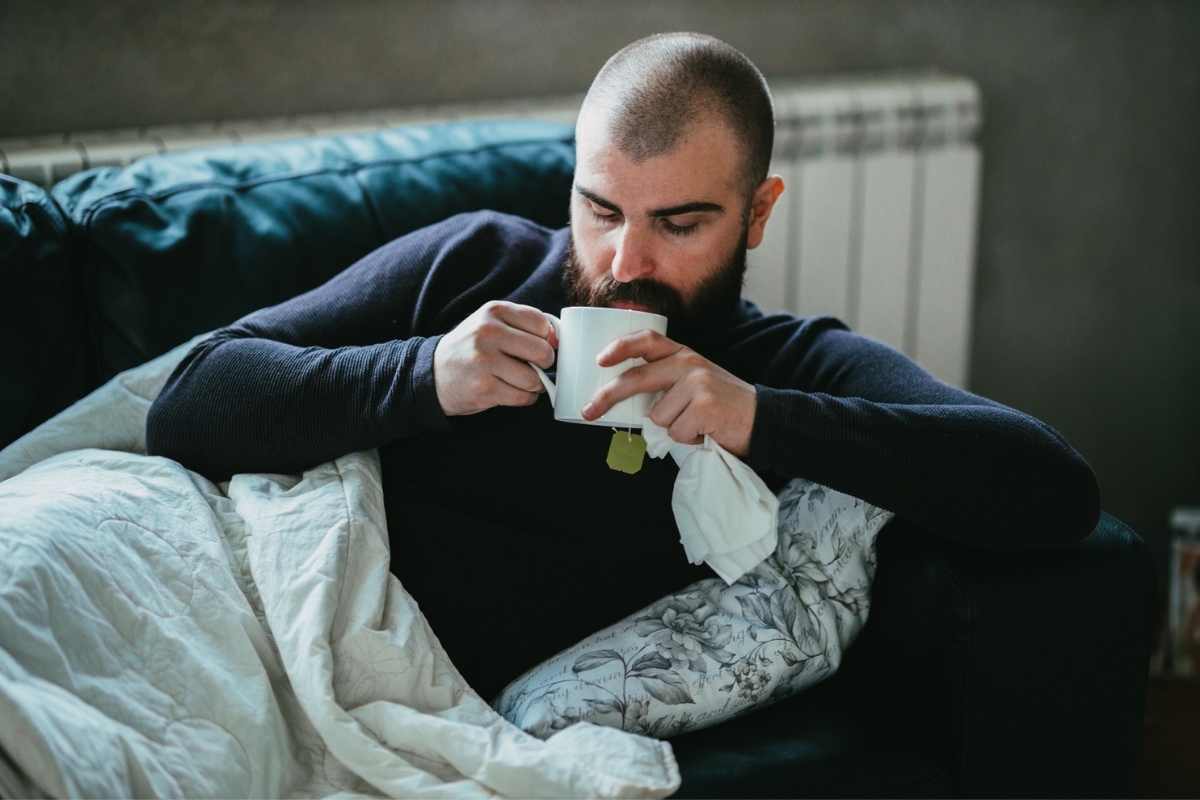
Stay calm and plan ahead. Here are a few simple supplies that can come in handy for managing mild COVID-19 symptoms at home.
It’s a question on many Australians’ minds – how will you manage symptoms if you get COVID-19?
While there’s no need to panic, planning ahead with a few essentials can help you feel more prepared should you become unwell.
In this article
How can mild COVID-19 symptoms be managed at home?
If you come down with COVID-19, it’s likely that your symptoms will be mild and you will be able to recover at home.2
This is especially likely for those who are up to date with their COVID-19 vaccinations.1
In these milder cases, you may experience symptoms like:3
- Runny or blocked nose, a scratchy or sore throat, sneezing or a cough
- Headaches, aches and pains or fatigue
- Mild fever
- Nausea, vomiting or diarrhoea
- Loss of appetite, smell or taste
For most people, these symptoms can be managed similar to how you’d treat a seasonal cold or flu – with lots of rest, fluids and self-care.2
Your COVID-ready kit
So what should you prepare?
There’s no need to go overboard with supplies, but here are a few things that may be useful to have on hand:1
- A thermometer. COVID-19 can cause a fever (a body temperature of 38°C or higher), so it’s a good idea to monitor your temperature if you’re unwell.
- Over-the-counter pain relief medications like paracetamol or ibuprofen to help soothe pain or discomfort if needed.
- Oral rehydration solutions. Drinking lots of fluids to stay hydrated is important when sick. Oral rehydration solutions like powders or effervescent tablets may be helpful if you experience vomiting or diarrhea, which can lead to dehydration.
- At least a week’s supply of any usual medications, so you don’t have to worry about getting prescriptions filled while you’re isolating at home.
- Face masks. If you live with other people – particularly if they’re more at risk of complications from COVID-19 – it’s important for everyone to wear masks when in a room together if one or more people have tested positive.
- Hand sanitiser, soap and cleaning products. Make sure you have enough of these on hand to keep everyone in the household safer during your isolation period.
- A plan for getting food and essentials delivered – whether it’s ordering online, or if you have a family member, friend or neighbour who could do a socially-distanced drop off.
- A list of contacts to call for help or advice. It can be a good idea to keep a list of numbers handy, like your GP and the National Coronavirus Helpline on 1800 020 080.
- Things that bring you comfort when you’re sick. Whether it’s a favourite herbal tea, a soothing soup, a heat pillow, throat lozenges, or a particular bath product, you might like to make sure you have some in the cupboard in case.
What if my symptoms are worse than that?
If you have COVID-19, it’s important to keep monitoring your symptoms.2
You can use the Australian Government’s COVID-19 Symptom Checker to find out when you should seek medical help, including when to call triple zero (000).2
Stay well at home with telehealth
HBF covers telehealth for mental health, physiotherapy, dietetics and nutrition and more.
Find out more
Sources:
- 1healthdirect – How to prepare a kit to manage COVID-19 at home (2022)
- 2healthdirect – What to do if you have COVID-19 (2022)
- 3healthdirect – Monitoring COVID-19 symptoms (2022)
Disclaimer:
This article contains general information only and does not take into account the health, personal situation or needs of any person. In conjunction with your GP or treating health care professional, please consider whether the information is suitable for you and your personal circumstances.